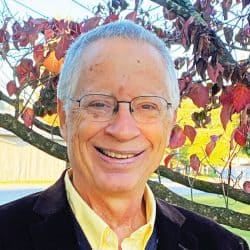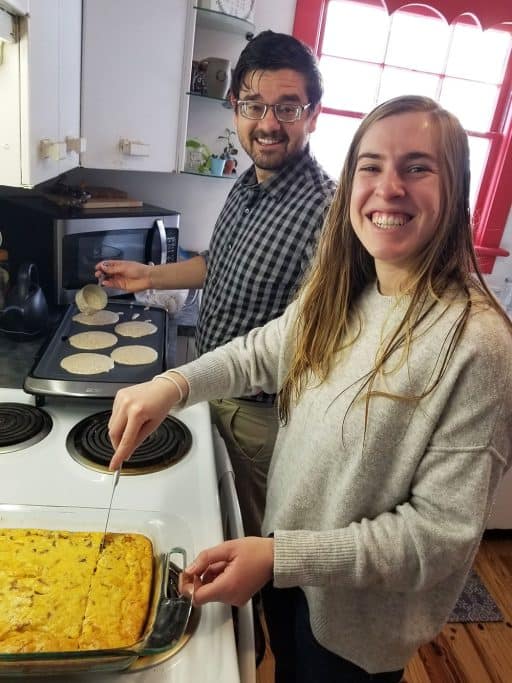The Anabaptist Mission Flame
 Twenty-five years ago, Amy Rush had an idea to serve pancakes to hungry college students on Sunday mornings. Her friends rallied to help, they offered invitations, and the Zion congregation supported the idea.
Twenty-five years ago, Amy Rush had an idea to serve pancakes to hungry college students on Sunday mornings. Her friends rallied to help, they offered invitations, and the Zion congregation supported the idea.
Soon the students came to eat pancakes, by the carloads, sometimes fifty or more. Some were intrigued by a rural country church with a great mountain view nine miles from Eastern Mennonite University. Then they caught on to monthly potlucks and they heard good preaching. On a recent Sunday, fifteen students came for worship and communion, with no pancakes or
potluck on the church schedule.
Recently I discovered that my ancestors joined the Anabaptist movement in the 1660s. They had been invited to adopt Anabaptist faith by neighbors. Hans and Catharina Joder (later Yoder) received believers’ baptism, and joined the Anabaptist-Mennonites. The flame of Anabaptism spread rapidly from neighbor to neighbor. But persecution pushed most Mennonites out of Switzerland.
The Anabaptist mission impulse sparked anew in the late 1800s in the Virginia Mennonite Conference (VMC). In 1887, Minister and Conference Moderator Joseph N. Driver and three men rode their horses to a high mountain point between Virginia and West Virginia. Joseph’s heart burned with evangelistic zeal at the prospect of preaching the gospel in the hamlets and valleys of West Virginia. Ministers and lay leaders rode horseback in extensive circuits in what came to be called “schoolhouse evangelism.” Out of that zeal, Virginia Mennonite Board of Mission and Charities (today, VMMissions) was born in 1919.

Having grown up in VMC, Caleb and Stephanie Schrock-Hurst are preparing to serve in Taiwan as workers with VMMissions and Mennonite Mission Network. Photo courtesy of Elwood Yoder
In the first half of the century, hundreds of Mennonite young adults caught the mission enthusiasm. Nellie Coffman traipsed up and down the mountains of West Virginia to witness to families and children of her faith in Jesus. Anna B. Showalter, from Broadway, Va., served in the mountains of West Virginia, teaching children during the heyday of the summer Bible school era. Anna also gave ten prime years of her life to the Mennonite mission in Knoxville, Tenn., the first church planted by VMMissions.
By the mid-twentieth century, Virginia Conference Mennonites utilized summer Bible school as a means of outreach. In at least eleven churches, the Bible school program included African American children. But this ran head-long into southern white resistance. Teaching mixed classes of black and white children in Bible school and Sunday school brought criticism. A strong mission impulse carried the day, though, and integrated classes were offered in spite of glacially slow progress toward racial integration in the South.
A forthcoming 2025 history book about VMC includes the mission growth and spread of churches far beyond Virginia. Three mission churches emerged in Florida, two vibrant congregations thrived in Hickory, N.C., another in Georgia, and two in Ohio. The missional impulse was strong in southeastern Virginia, such that by 1972 the Warwick and Norfolk Districts had a combined nine congregations. Beyond U.S. borders, Mennonites started mission churches in Italy, Jamaica, and Trinidad, and later elsewhere around the world.
Today, the mission flame of the early Anabaptists is still very much alive. VMMissions continues to send people to live and share the good news of Jesus, locally and around the world. I am particularly encouraged by the gospel zeal of young adults who serve and are exploring life on mission.
Elwood Yoder is an historian, author, and retired history and Bible teacher from Broadway, Va.
